The Subtle Beauty of Vine Maples
We have a very special tree – The Hobbit Tree. Deep in the forest at the edge of our property there is an old gnarly vine maple (Acer circinatum), defying gravity and dripping with moss. It was all but buried under blackberries and reed canary grass and surrounded by alders and several Douglas fir trees. My husband discovered – and named it, while clearing out the brush one day.
Its contorted shape was so improbable and being set in a shadowy green grove that he could almost believe he had stepped into the pages of Tolkien – hence its name The Hobbit Tree.
In its’ natural environment the vine maple is an understory plant – either a large shrub or small tree depending upon your perspective, slowly growing to 30’ tall and 20’ wide. It can be found in quite dense shade under a canopy of towering conifers in which case its growth habit will be rather leggy like ours. At the edge of a woodland where it receives more sun the habit will be more rounded.
Typically vine maples are multi trunked branching from close to the base which creates an interesting silhouette, especially in winter when the smooth olive green bark is revealed. In spring bright green leaves unfurl, held on red stems, each circular leaf pleated like a tiny fan. The color deepens to mid-green by summer but is perhaps best known for its array of fiery fall colors which can start as early as August. As autumn progresses they make a spectacular sight dotted on the hillsides surrounded by evergreens.
Such beauty need not be limited to the natural landscape of course. Due to their small size they are well suited to the home garden as specimen trees or transitional elements. I have used them many times in gardens which back onto natural habitats such as wetlands or green belts. In narrow spaces I seek out single trunked trees or one of the smaller cultivars. Vine maples are also useful where soil erosion is a problem such as stream banks.
Cultivars
Pacific Fire came onto the market a few years ago, celebrated for its vivid salmon pink bark which rivals the popular coral bark maple (Acer palmatum ‘Sango-kaku'). Or it could be an alternative to the invasive forms of red twig dogwoods. It is much smaller than the species at 6’ x 6’ yet has the same attractive leaf.
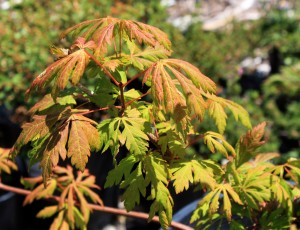
The foliage on 'Monroe' is finely cut - quite different from the usual vine maple. Photo credit; East Bay Wilds Native Plant Nursery
Monroe will be hard to track down but worth the hunt. It’s leaves are more finely dissected and resemble a Japanese maple. It has a more open branching structure and grows a little smaller than the species.
Little gem. I spotted this at Dragonfly Farms Nursery in Kingston, WA just yesterday and of course it leapt into the back of my car before I knew it! This is a witches broom (a funky, twiggy growth off a regular tree) found in Vancouver BC and promises to be a spectacular shrub growing to about 4’ a 4’. Mine has leaves about 1/3 the size of the regular tree and the bark is colorful with both red and green evident. I’m going to place this as I would a small Japanese maple – adjacent to a boulder or water perhaps. A backdrop of either deep green or burgundy would showcase the foliage the best and definitely close to a pathway so I can enjoy it. Vine maples scorch in hot afternoon sun so I need to place it where it is either in dappled light or at least just has direct sun in the morning. It would also make a wonderful container plant.
I am often inspired by Nature and this little maple is a case in point. The highly ornamental Japanese maples are outstanding and I have quite a few (with plans for a few more!), but there is something to be said for looking at your surroundings, seeing what does well and emulating that. Not every plant in your garden has to scream “Look at me!”. Sometimes a more subtle beauty is needed.
Cultural requirements
Mature size – rarely exceeds 30’; usually 10-12’ tall and wide in a home garden
Soil – fertile, moisture retentive soil is ideal but this tough tree is pretty adaptable. Its native soil is acidic
Sun/shade – avoid afternoon soon
Water – drought tolerant after a few years in moisture retentive soil
Companion planting – ferns, hostas and hellebores are all perfect partners. ‘Ivory Prince’ hellebore looks beautiful massed underneath,since the apple green in the flowers repeats the trees bark color.
Hardiness – USDA 6-9
Resources
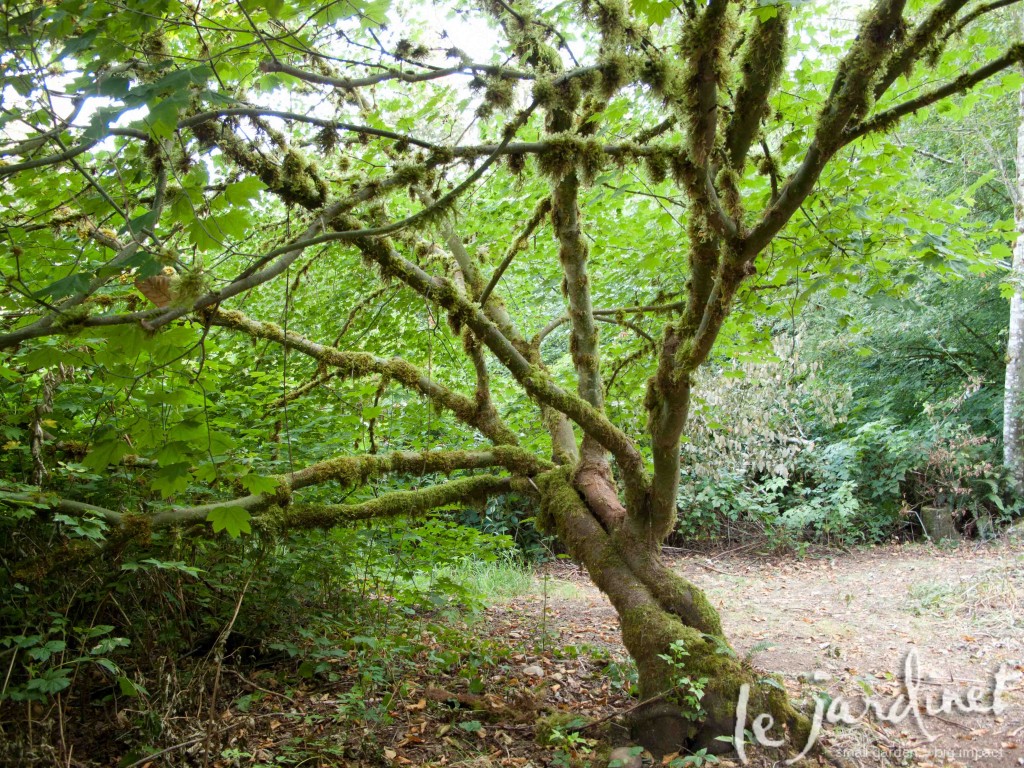
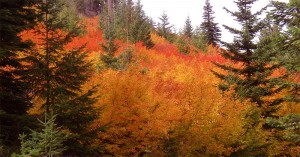
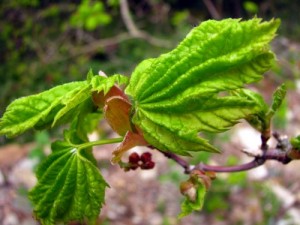
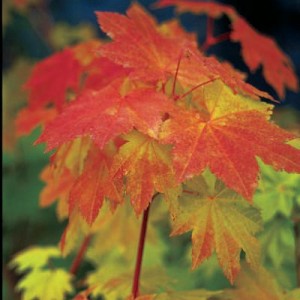
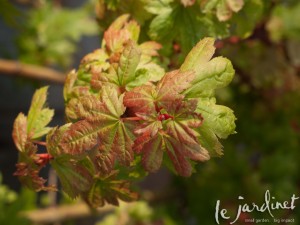
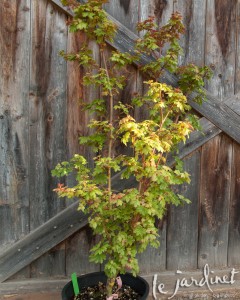
It really IS a Hobbit Tree! Those must be magical to see in the autumn — what vibrant colors! Multi-trunked trees always have such intriguing shapes.
The vine maples already have some color and look beautiful.
A fairy tale tree! I love trees of character, and old, twisted ones draped in moss are the stuff of my dreams. Do you have ant plans to develop a garden area around it?
No Deb I won't be creating a garden there. the Hobbit Tree is adjacent to a trail through the forest. In spring there are wild trilliums and bleeding hearts – perfect companions.
[…] this year I purchased a beautiful dwarf vine maple (Acer circinatum 'Little Gem'). I knew this was the perfect focal point for my design […]
Although I like Japanese maples too, Vine maple may be my favorite between them. When we had space for more trees here in Beaverton, west of Portland, our selection was Vine maple … two of them. The characteristic that they are flexible and not brittle appeals to me too. And I like the way the leaves unfurl as well as the color of the new seed samaras.
MDV
Oregon
A good point about their flexibility MDV – important in our winter winds and snow. The spring foliage is so pretty too with their tight pleats unfurling a little more each day. One of the highlights of the spring garden for those who take the time to look.